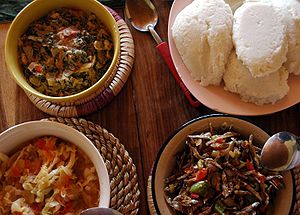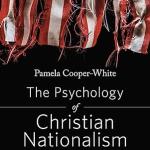Probably because I now live in a land where the hunger season comes every year and where everyone over the age of 12 probably has some memory of something approaching actual famine, I’ve been thinking a lot lately about the difference between what food meant when Jesus said, I am the bread of life and what it means in America these days.
I feel like “I am the bread of life” has sort of become meaningless in America, where we have far more choices in our dietary practices than in our political process, where we can determine to be vegetarian, vegan, Paleo, macrobiotic, all-raw or all-American, where we sometimes wish for a spare stomach or a vomitorium so we can go on enjoying the pleasures of the table even once we’re past the point of satiety, where meals and snacks are so easily available any place and at any time.
But in Malawi, as in Palestine in Jesus’ day, most people relied on a staple grain crop (maize in Malawi; barley and wheat in Palestine) that they grew and processed and cooked mostly by their own labor, aided by few if any of the convenient tools now used for these tasks. Bread from heaven is a lesser miracle in a land where you tap on your iPhone and in fifteen minutes take a pizza and Caesar salad from a teenager in a uniform.

Malawian people love to tell azungu (white people) about nsima, their staple food. It’s a lot like thick polenta, only they use white corn that they grow, and dry, and pound themselves. (You can, however, buy maize meal in the store. I did: it was about $1 for a five pound bag.) Instead of utensils, Malawians use a little ball of nsima to scoop up a bit of ndiwo—relish—that’s made from vegetables. It’s not just that nsima is a national dish that they eat sometimes. As our gardener said:
“Nsima…that is our food. That is our life. If you do not have nsima, you do not have life.”
And it is true. For many people in the world, one starchy staple crop (corn, rice, wheat, etc.) is what they live on, with vegetables and fruits playing a smaller role, and protein-rich foods like milk, eggs, and meat playing an even vanishingly smaller one. So when the rains are late, or do not come at all, or when there is blight, or mold, or some unforeseen destruction, there is very little to live on.
I am the [bread, rice, nsima, fufu] of life.
I’m not romanticizing hunger or the reliance on single starchy staples. Great organizations like Heifer and like Presbyterian Mission Agency (for which I and my family work) do so much to help diversify the diets of the poorest people in the world–and they need to be diversified. But I do wonder how different Jesus’ words sound to people here, particularly if we adapt them to be more culturally appropriate:
I am the nsima of life.
And I wonder how we, in the well- (and often over-) fed West can learn to hear those words with the same sharpness and relevance: Jesus’ startling claim that he is, somehow, what we need most. What sustains us, nourishes us, delights us, satisfies and comforts us in the desolate places and the wilderness and the hungry seasons.
Because ‘I am the wi-fi of life,’ or ‘I am the iPhone of life’ just doesn’t seem accurate, somehow…















